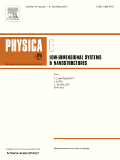
PHYSICA E-LOW-DIMENSIONAL SYSTEMS & NANOSTRUCTURES
Scope & Guideline
Pioneering research in condensed matter and nanostructures.
Introduction
Aims and Scopes
- Nanostructured Materials and Their Properties:
Research on various nanostructured materials including graphene, transition metal dichalcogenides (TMDs), and nanocomposites, focusing on their electronic, optical, and magnetic properties. - Quantum Transport Phenomena:
Studies exploring quantum transport in low-dimensional systems, including quantum dots, nanowires, and two-dimensional materials, often investigating phenomena such as tunneling, conductance, and spin transport. - Synthesis and Characterization Techniques:
Development and application of advanced synthesis techniques for nanomaterials, including chemical vapor deposition (CVD), hydrothermal methods, and other fabrication techniques, alongside comprehensive characterization methods. - Optoelectronic Devices and Applications:
Research into the design, fabrication, and performance of optoelectronic devices such as photodetectors, solar cells, and sensors, utilizing low-dimensional materials for enhanced functionality. - Theoretical Modeling and Simulations:
Utilization of computational methods and first-principles calculations to model and predict the physical properties of nanostructured materials, aiding in the understanding of their behavior under various conditions. - Magnetism and Spintronics:
Investigations into magnetic properties of low-dimensional materials and their applications in spintronic devices, addressing phenomena like ferromagnetism, antiferromagnetism, and spin transport.
Trending and Emerging
- 2D Materials and Heterostructures:
There is a significant rise in research on two-dimensional materials and their heterostructures, focusing on their unique properties and potential applications in electronics, optoelectronics, and spintronics. - Machine Learning and AI in Material Science:
Increasing integration of machine learning and artificial intelligence methods in predicting material properties and optimizing synthesis processes, marking a shift towards data-driven research in nanotechnology. - Sustainable and Green Nanotechnology:
Growing interest in environmentally friendly synthesis methods and applications of nanomaterials for energy harvesting, storage, and pollution remediation, reflecting a broader societal push for sustainability. - Quantum Information and Spintronics:
Emerging themes in quantum information science, particularly in relation to spintronics, are gaining traction, with studies focusing on quantum coherence, entanglement, and topological effects in low-dimensional materials. - Multifunctional and Smart Materials:
Research on multifunctional materials that exhibit multiple properties or functionalities, such as sensors that can respond to various stimuli or materials that combine electronic and photonic properties, is on the rise.
Declining or Waning
- Traditional Bulk Materials:
Research focusing on bulk materials and their properties has seen a decline, as the emphasis shifts towards more advanced low-dimensional systems and nanostructures. - Conventional Photovoltaic Technologies:
There is a noticeable reduction in studies related to traditional photovoltaic technologies, with a greater focus on novel materials and hybrid systems that incorporate two-dimensional materials. - Basic Thermoelectric Materials:
Research on basic thermoelectric materials has decreased in favor of more innovative approaches that combine various nanostructured materials to enhance thermoelectric performance. - Classical Sensor Designs:
The frequency of studies on classical sensor designs has diminished, as interest grows in sensors that leverage the unique properties of low-dimensional materials for improved sensitivity and selectivity.
Similar Journals

npj Quantum Materials
Unveiling the Potential of Quantum Materialsnpj Quantum Materials is a premier, peer-reviewed academic journal published by NATURE PORTFOLIO, focusing on the transformative field of quantum materials. Launched in 2016, this open-access journal aims to bridge the gap between theoretical advances and experimental discoveries, providing a platform for researchers to share cutting-edge findings in condensed matter physics and materials science. With a prestigious Q1 ranking in both Condensed Matter Physics and Electronic, Optical and Magnetic Materials, it stands out in its field, boasting impressive Scopus rankings—#34 out of 434 in Condensed Matter Physics and #39 out of 284 in Electronic, Optical and Magnetic Materials, putting it in the 92nd and 86th percentiles, respectively. The journal emphasizes collaborative efforts that drive innovation and application in quantum technologies, making it an essential resource for researchers, professionals, and students eager to contribute to this rapidly evolving discipline. Accessible to a global audience, npj Quantum Materials continues to shape the future of quantum research through its high-quality publications and community engagement.

ACTA PHYSICA POLONICA A
Fostering Knowledge Exchange in the Physics CommunityACTA PHYSICA POLONICA A is a distinguished peer-reviewed journal published by the Polish Academy of Sciences Institute of Physics, offering a platform for disseminating cutting-edge research in the field of physics and astronomy. With an ISSN of 0587-4246 and an E-ISSN of 1898-794X, this journal has been a staple for scholars since its inception, converging its publication years from 1996 to 2024. Despite its current Q4 classification in the Physics and Astronomy (miscellaneous) category, ACTA PHYSICA POLONICA A provides valuable insights and breakthroughs addressing various aspects of general physics. Researchers, professionals, and students will find a wealth of knowledge within its pages, even as it operates in an evolving academic landscape. While subscription options exist, the journal aims to foster collaboration and knowledge exchange in the physics community, making it a vital resource for those seeking to stay at the forefront of research advancements.
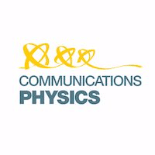
Communications Physics
Catalyzing discoveries in the realm of Physics and Astronomy.Communications Physics is a premier open access journal published by Nature Portfolio, dedicated to disseminating high-quality research in the field of Physics and Astronomy. Since its inception in 2018, the journal has rapidly established itself as a vital platform for innovative scientific communication, boasting an impressive Impact Factor and achieving Q1 status in the 2023 category of Physics and Astronomy (miscellaneous). With a Scopus rank of #31 out of 243, placing it within the 87th percentile, Communications Physics attracts a global audience of researchers, professionals, and students eager to engage with cutting-edge findings. The journal supports open access, ensuring that research is freely available to the public, which enhances its visibility and encourages broader discussions within the scientific community. Located in Berlin, Germany, Communications Physics aims to bridge the gap between various disciplines within physics, fostering interdisciplinary collaboration and inspiring future research endeavors.

Condensed Matter
Unlocking the Secrets of the Physical WorldCondensed Matter is a leading open-access journal dedicated to the diverse and dynamic field of condensed matter physics, published by MDPI since 2016. With its base in Switzerland, the journal aims to present a platform for researchers and professionals to share innovative findings and advancements in areas such as electronic, optical, and magnetic materials. As of 2023, it is ranked in the Q3 category for both condensed matter physics and electronic, optical, and magnetic materials, a testament to its relevance and growth within the scientific community. Researchers will find valuable insights through its accessible format, fostering collaboration and knowledge dissemination within this interdisciplinary field. With a commitment to enhancing the global dialogue in condensed matter studies, Condensed Matter invites contributions that explore theoretical and experimental approaches, thus pushing the boundaries of understanding in this crucial area of science.
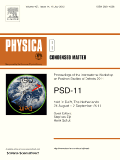
PHYSICA B-CONDENSED MATTER
Elevating Scholarship in Condensed Matter Physics and EngineeringPHYSICA B-CONDENSED MATTER, published by Elsevier, stands as a leading journal within the field of condensed matter physics, electrical and electronic engineering, as well as electronic, optical, and magnetic materials. With an impressive impact factor and a solid ranking in various Scopus categories—Q2 for 2023 in Condensed Matter Physics, Electrical and Electronic Engineering, and Electronic, Optical, and Magnetic Materials—this journal offers a vital platform for advancing research and fostering collaboration among academics and industry professionals. The scope of the journal encompasses a wide range of topics, including fundamental research findings, applications, and technological innovations in condensed matter. While it does not currently provide open access, PHYSICA B-CONDENSED MATTER is highly regarded for its rigorous peer-review process and dedication to high-quality scholarship, making it an indispensable resource for researchers, professionals, and students keen on exploring the complexities and advancements in materials science. Submissions are welcomed from a global community of scholars, contributing to an ongoing discourse in this dynamic and rapidly evolving field.

Science China-Physics Mechanics & Astronomy
Bridging Theory and Application in the Physical SciencesScience China-Physics Mechanics & Astronomy, published by SCIENCE PRESS, stands as a prestigious journal within the Physics and Astronomy domain, particularly recognized for its contributions to the understanding of fundamental and applied physics. With an exhilarating Q1 ranking in the 2023 category and earning a remarkable scopus rank of #21 out of 243, the journal demonstrates its significant impact, being positioned in the 91st percentile of its field. Operating under an Open Access model, it facilitates the broad dissemination of high-quality research, ensuring accessibility for researchers, professionals, and students worldwide. Its scope covers a variety of essential topics in physics and astronomy, promoting a comprehensive understanding of the latest advancements from 2010 through 2024. The journal is a vital resource for anyone aiming to stay at the forefront of research in these dynamic fields, with its prominent address located in Beijing, China, symbolizing its global influence.
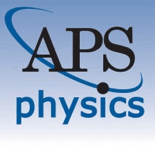
PHYSICAL REVIEW B
Driving Progress in Electronic and Optical MaterialsPHYSICAL REVIEW B, published by the American Physical Society, is a leading journal in the field of condensed matter physics and materials science, particularly focusing on electronic, optical, and magnetic materials. With an ISSN of 2469-9950 and an E-ISSN of 2469-9969, this periodical has garnered a prestigious reputation, achieving a Q1 ranking in both relevant categories as of 2023. The journal has recorded significant impact as reflected in its Scopus ranks, notably positioned at #95 out of 434 in Condensed Matter Physics and #75 out of 284 in the Materials Science sector, illustrating its importance in advancing research and discussions in these critical areas. Although it does not offer open access, PHYSICAL REVIEW B remains an invaluable resource for academics, researchers, and professionals seeking to increase their understanding of contemporary issues in condensed matter and material sciences. Established in 2005, this journal continues to foster innovation and dissemination of knowledge, making it a cornerstone publication for those engaged in cutting-edge research.
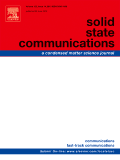
SOLID STATE COMMUNICATIONS
Bridging Research and Application in Solid-State MaterialsSOLID STATE COMMUNICATIONS is a prestigious journal published by Pergamon-Elsevier Science Ltd, dedicated to disseminating cutting-edge research in the fields of Chemistry, Condensed Matter Physics, and Materials Chemistry. With an ISSN of 0038-1098 and an E-ISSN of 1879-2766, the journal has established itself as a vital resource for researchers and professionals seeking to explore the fundamental properties and innovative applications of solid-state materials. As of 2023, it boasts a commendable standing, ranking in the Q2 quartile across its various categories, reflecting its impactful contributions to the scientific community. The journal is indexed in Scopus, further validating its relevance and quality, with notable ranks close to the median percentile in key areas. While SOLID STATE COMMUNICATIONS does not currently offer Open Access options, it remains a highly regarded source for rigorous scientific inquiry and open discussions, with a publication history dating back to 1963 and continuing to 2024. The journal serves as an essential platform for disseminating groundbreaking findings and fostering collaboration within the vibrant fields of solid state science.

Micro and Nanostructures
Bridging Science and Innovation at the NanoscaleMicro and Nanostructures is a leading academic journal published by Academic Press Ltd - Elsevier Science Ltd, focusing on the cutting-edge fields of biomaterials, condensed matter physics, and electronic, optical, and magnetic materials. With an impact factor reflecting its rising status, the journal has achieved remarkable rankings within its categories, including Q2 in Condensed Matter Physics and Electronic, Optical and Magnetic Materials, and Q3 in Biomaterials, as of 2023. Spanning from 2022 to 2024, Micro and Nanostructures presents integral research that advances the understanding and application of micro- and nanostructured materials, thereby playing a crucial role for researchers, professionals, and students alike. As an open access publication, it ensures broad accessibility to groundbreaking studies that shape the future of material science. The journal's commitment to high-quality research and its strategic positioning as a premier source of knowledge in its domain make it an essential platform for the dissemination of innovative ideas and discoveries.
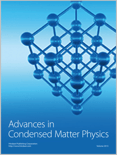
Advances in Condensed Matter Physics
Fostering Collaboration in Cutting-Edge PhysicsAdvances in Condensed Matter Physics is a distinguished journal published by HINDAWI LTD, dedicated to the rapid dissemination of high-quality research in the field of condensed matter physics. Since its inception in 2008, this Open Access journal has facilitated wide accessibility to cutting-edge findings and theoretical advancements, with aims to foster collaboration and innovation within the scientific community. With an ISSN of 1687-8108 and an E-ISSN of 1687-8124, the journal covers an extensive range of topics, from quantum materials to nanotechnology, ensuring relevance and engagement across various sub-disciplines. As a testament to its impact in the field, it is ranked in the Q3 category for 2023 within Scopus and holds a position in the 34th percentile for physics and astronomy. The journal's continuous commitment to publishing significant exploratory research until 2024 makes it a pivotal resource for researchers, professionals, and students eager to stay on the leading edge of condensed matter physics advancements.